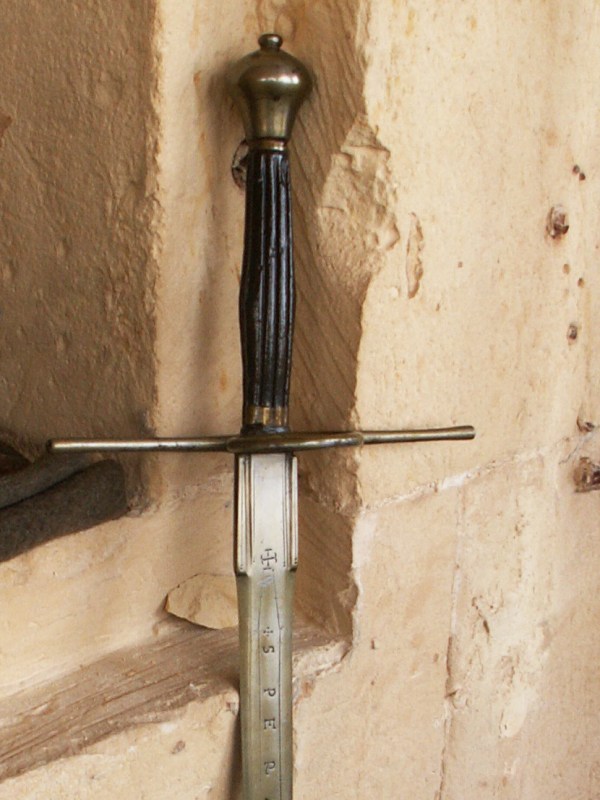Longsword
The longsword is one of the most widely practiced sword in modern Historical European Martial Arts. It is also one of the oldest, with the earliest known treatises for its use appearing in the 13th century.

Depictions of the longsword; at least, some kind of proto-longsword; appear in art well before that, with some depictions appearing in the 12th century. Accounts dating back to this period also describe swords being used in two hands.
The earliest depictions of longswords are not significantly longer in the blade than most arming swords, although they typically have an extended grip which allows them to be used two handed. In some cases, the extension is minimal, with some war sword or bastard sword handles being about two fingers' worth longer. This allows the person using it to grip the pommel more easily.
True longsword handles are generally long enough to allow a few inches of space between the hands when it is held in the most common way, that is one hand under the cross guard and the other around the pommel. The pommels on longswords also tend to have some manner of teardrop shape, which is more ergonomic.
Since the extended handle creates a great deal of leverage, the length of blade that can be easily moved increases; over time, we see the length of the blade grow considerably. This also brought about a different style of fighting, where the length of the blade is used to manage distance and cover the wielder without having to rely on a shield.
They are almost always double edged, and generally weigh around 1.5kg on average. While physical characteristics vary wildly between surviving examples (eight of the twenty-two types of the Oakeshotte typology describe longswords, and that does not account for cosmetic variations), many are optimised for cutting, while still being able to deliver a stiff thrust.
The hilts typically include a cross-guard with straight quillons, though this is not universal. Later examples often include defensive rings, which protect the hand from cuts. Grips are long enough to accommodate two hands. While there is no strict size for these weapons, we know from the writings of the Italian Master, Filippo Vadi, that some proportions were preferred, at least in some circles.
Every part of the longsword is a viable weapon. Pommel and quillon strikes are well documented, as is the use of the sword as a lever in grappling. The longsword is not a big metal club, it is an extremely versatile weapon system.
Some types of sword can be considered to be an evolution of the longsword. The Estoc, for instance, is a longsword which is specialised for armoured combat; it has no cutting edge, and is very rigid throughout. The true two handed sword, which is far larger than most longswords, is designed for situations where one is facing multiple opponents. In both cases, they are specialised enough that they require their own techniques, though they are influenced by the same principles as the longsword.
Our Curriculum
Longsword training at the Malta Historical Fencing Association is based on the system developed by Maestro Andrea Lupo Sinclair for FISAS, and incorporates elements from the German and Italian traditions, including the teachings of Joachim Meyer and Achille Marozzo.
Back to weapons